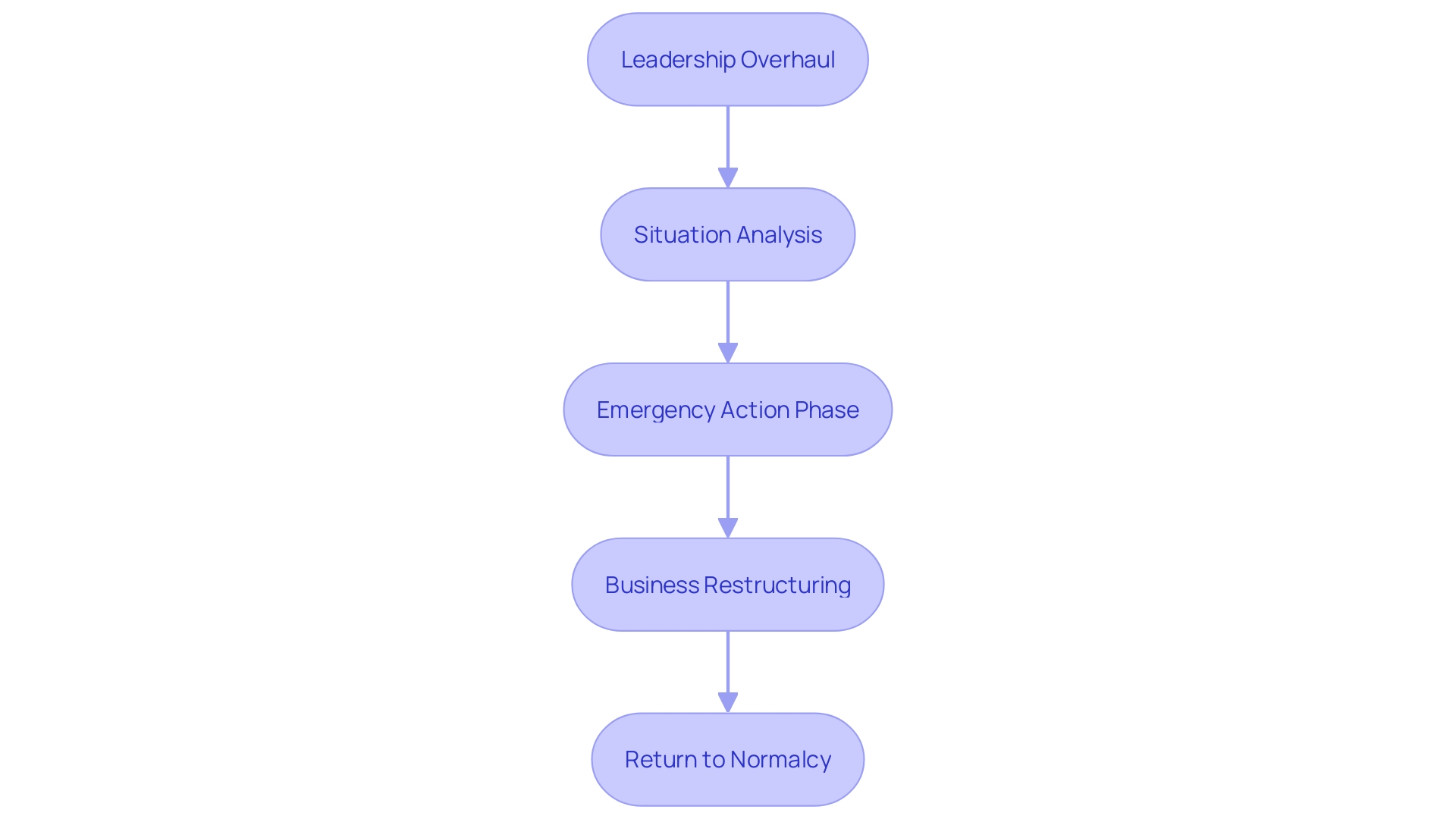Introduction
Achieving a successful business turnaround requires a series of strategic actions aimed at revitalizing operations and restoring profitability. From crisis management and new leadership to stakeholder communication and financial restructuring, each step is integral to navigating a company back to a position of strength and market relevance. In this article, we will explore the key elements of a successful business turnaround and the stages involved in the turnaround process.
By implementing these practical solutions, CFOs can lead their organizations towards a brighter future.
Key Elements of a Successful Business Turnaround
Achieving a turnaround in the industry and construction sectors involves a series of strategic actions aimed at revitalizing operations and restoring profitability. The procedure starts with Crisis Management, where prompt actions are taken to stabilize the cash flow, decrease assets, secure short-term funding, and implement cost-reduction approaches. Transitioning to New Management may involve appointing a new CEO and evaluating the credibility of the senior management team to ensure they can lead the organization effectively through the turnaround.
Communication plays a crucial role, hence Stakeholder Communication is about providing clear and consistent information to all parties involved, maintaining their confidence throughout the process. A comprehensive Strategic Review ensures that the business approach is suitable for current market conditions and explores options such as divestment, downsizing, and investment.
Changes must permeate through the culture and operations of the organization. Culture and Operational Changes may involve structural adjustments and enhancing communication strategies. This is complemented by Critical Process Improvement, which focuses on bolstering sales and marketing efforts, driving further cost reductions, and adhering to principles of elimination, automation, and delegation.
Lastly, Financial Restructuring is about reshaping the company's financial architecture through refinancing, asset reduction, and modifying debt and equity arrangements. Each of these steps is integral to navigating a company back to a position of strength and market relevance.
Stages in the Turnaround Process
Revitalizing a faltering enterprise is a complex undertaking that demands a meticulous and well-thought-out strategy. The transformation begins with a leadership overhaul to breathe new life into the organization. Selecting a CEO with a track record of success and removing those resistant to change is essential to set the stage for recovery.
A thorough situation analysis follows, pinpointing profitable business segments while weeding out underperformers. This crucial step is akin to a restaurant in a bustling city center reevaluating its strategy to attract more diners, as highlighted by John Young, who emphasizes the importance of understanding the market to drive success.
The emergency action phase is crucial, emphasizing on financial control and establishing a breakeven point. Centralized cash management and a scrutinized balance sheet are key to unlocking internal liquidity sources, much like a tech startup navigating through rapid growth and organizational stress, as detailed in 'Scaling Through Chaos.'
Business restructuring is next, aiming to repair the capital structure, renegotiate debts, and carve out profitability from remaining operations. This echoes the sentiment of Esther Kestenbaum Prozan, who advises that sustainable growth is attainable through lean and calculated measures rather than sheer capital injection.
Finally, a return to normalcy involves institutionalizing the adopted cultural changes, exploring avenues for profitable growth, and enhancing customer service and relationships. This phase is critical, as a startup's survival hinges not just on its innovative product but also on the satisfaction and loyalty of its customer base.

Conclusion
In conclusion, a successful business turnaround requires strategic actions such as crisis management, new management, stakeholder communication, strategic review, culture and operational changes, critical process improvement, and financial restructuring. These steps are integral to revitalizing operations and restoring profitability.
Crisis management stabilizes cash flow and implements cost-reduction strategies. New management evaluates the senior team and appoints a new CEO if necessary. Effective stakeholder communication maintains confidence throughout the process.
A thorough strategic review ensures the business strategy aligns with market conditions. Culture and operational changes involve adjusting structures and enhancing communication. Critical process improvement focuses on sales, cost reduction, and efficiency.
Financial restructuring reshapes the company's financial architecture through refinancing and asset reduction. Each step is crucial in navigating the company back to strength and market relevance.
The turnaround process includes a leadership overhaul, situation analysis, emergency action, business restructuring, and a return to normalcy. Leadership overhaul selects a CEO and removes resistance to change. Situation analysis identifies profitable segments.
Emergency action focuses on cash control and establishing a breakeven point. Business restructuring repairs the capital structure and renegotiates debts. Returning to normalcy institutionalizes cultural changes and enhances growth and customer service.
By implementing these practical solutions and following the turnaround process, CFOs can lead their organizations to a brighter future. It requires a careful and strategic approach, but with the right actions and leadership, a successful business turnaround is achievable.




